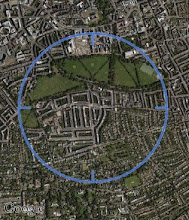"The City of Edinburgh Council and Edinburgh World Heritage are working together to conserve and repair the much-loved local landmark, the Jawbone Arch. This statement is to update you on the progress to date.
The conservation of 125-year old natural whale bone makes for an interesting challenge. As it is a very unusual material there is no existing body of knowledge and so accredited conservators were commissioned to work out how to stabilise and protect them and what materials to use.
In a delicate operation, the four whale jawbones were carefully liberated from their concrete
bases, then taken away to dry out slowly under controlled conditions. Once the jawbones were dry, they were moved to the conservation workshop where specialists removed all the soiling and biological growth and assessed their condition. They found that the main causes of the problems were previous attempts to repair the bones which had been carried out using inappropriate materials such as car body filler and cement. On top of this, the concrete foundations had been trapping water in the bones and causing them to decay.
The poor quality historical repairs were carefully removed and the recesses filled with natural lime mortar where necessary. The jawbones were also given a temporary shelter coating of lime to help protect the bones from weather, dirt, and deposits from the trees above. Whilst this conservation work was going on, new stainless steel fixings were designed and handmade by an artist to replace the corroded iron fixings that joined the bones at the top of the arch.
However, just as the conservation treatment was completed, the specialist conservator went into liquidation. This had a number of serious implications especially as there are very few suitably experienced specialists who have the expertise for such a unique conservation project and for this reason, the procurement process to organise another consultant to take over took many months. In addition, the conserved jawbones had to be immediately removed but we were very lucky to find a cost-free location in which to store them.
Meanwhile, some of the paths in the Meadows were being resurfaced and so in order to get best value for our limited project funds the contractors were asked to simultaneously prepare the end section of Jawbone walk for the return of the arch in the expectation that they would be reinstalled in Autumn of 2016. This includes provision for new uplighting of the arch which has been made possible by private donors.
CEC and EWH are conscious that the delay in re-opening the section of path has caused some inconvenience to the public and that local residents and users of the Meadows are anxious to know about the progress of the project. We are currently working with the new contractor to explore options for the new foundations and supports for the base of the arch. We want to ensure that the methodology for the reinstallation of the bones is to the highest conservation standard. The bones must be returned without any damage and we must make sure that the arch is structurally safe. The proposed method under consideration involves the use of a permeable lime concrete which is required to cure slowly under certain conditions. To avoid potential damage from frost, we will have to wait until warmer weather to complete this part of the work which will mean keeping the path closed longer than expected.
We recognise that people are naturally taking a shortcut around the site area, and that this has caused some damage to the grass. We are looking at how we can ensure that the underfoot conditions remain useable during the winter months.
We understand that there is a lot of interest in what’s happening to the Jawbone Arch, and we are committed to keeping people better informed as the project moves forward. We thank you for your patience as we get this local Edinburgh landmark ready to stand on the Meadows for another 100 years."



No comments:
Post a Comment